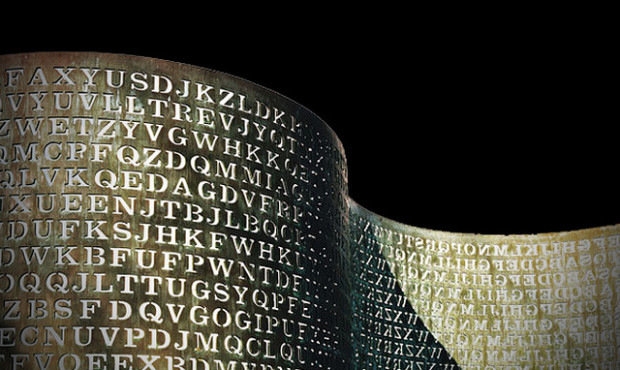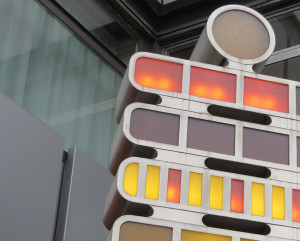In 1989, the year the Berlin Wall began to fall, American artist Jim Sanborn was busy working on his Kryptos sculpture, a cryptographic puzzle wrapped in a riddle that he created for the CIA’s headquarters and that has been driving amateur and professional cryptographers mad ever since.
To honor the 25th anniversary of the Wall’s demise and the artist’s 69th birthday this year, Sanborn has decided to reveal a new clue to help solve his iconic and enigmatic artwork. It’s only the second hint he’s released since the sculpture was unveiled in 1990 and may finally help unlock the fourth and final section of the encrypted sculpture, which frustrated sleuths have been struggling to crack for more than two decades.
The 12-foot-high, verdigrised copper, granite and wood sculpture on the grounds of the CIA complex in Langley, Virginia, contains four encrypted messages carved out of the metal, three of which were solved years ago. The fourth is composed of just 97 letters, but its brevity belies its strength. Even the NSA, whose master crackers were the first to decipher other parts of the work, gave up on cracking it long ago. So four years ago, concerned that he might not live to see the mystery of Kryptos resolved, Sanborn released a clue to help things along, revealing that six of the last 97 letters when decrypted spell the word “Berlin”—a revelation that many took to be a reference to the Berlin Wall.
To that clue today, he’s adding the next word in the sequence—“clock”—that may or may not throw a wrench in this theory. Now the Kryptos sleuths just have to unscramble the remaining 86 characters to find out.
Sanborn hass always been fascinated by Berlin’s many clocks but the Berlin Clock in particular has intrigued him the most. The clock, also known as the Berlin Uhr or Set Theory Clock, was designed in the 1970s by inventor and tinkerer Dieter Binninger. It displays the time through illuminated colored blocks rather than numbers and requires the viewer to calculate the time based on a complex scheme.
“Clock” could easily refer instead to a method devised by a Polish mathematician and cryptologist during World War II to crack Germany’s Enigma ciphers—a method that was expanded on by Alan Turing and his team at Bletchley Park who are credited with ultimately cracking Enigma.
[Read more at The NYTimes]


